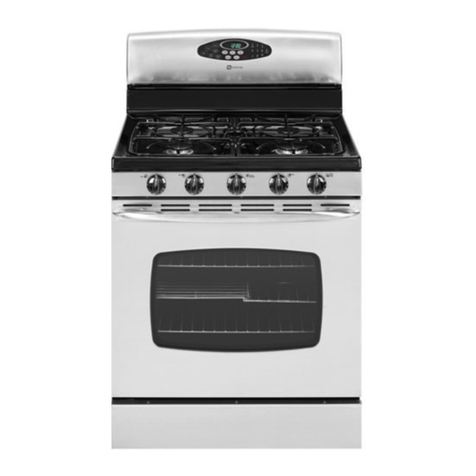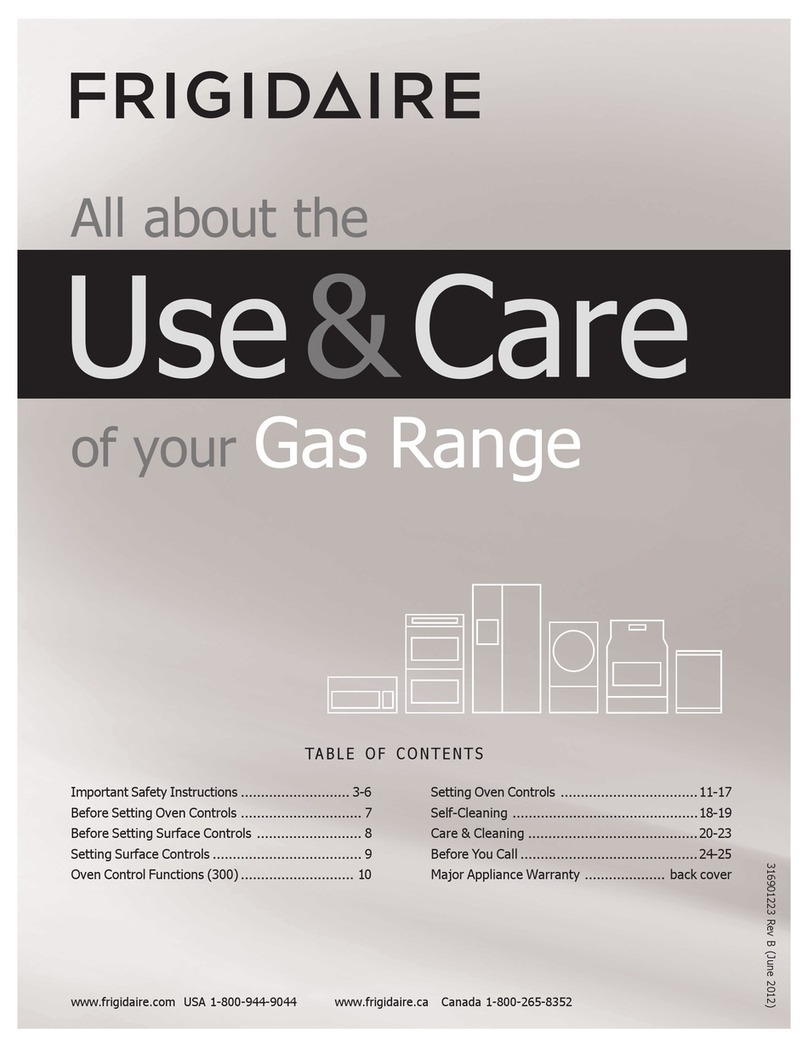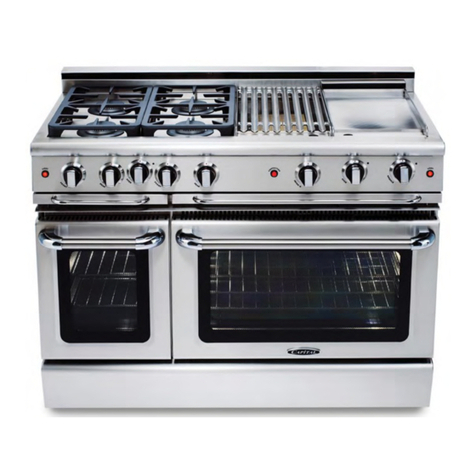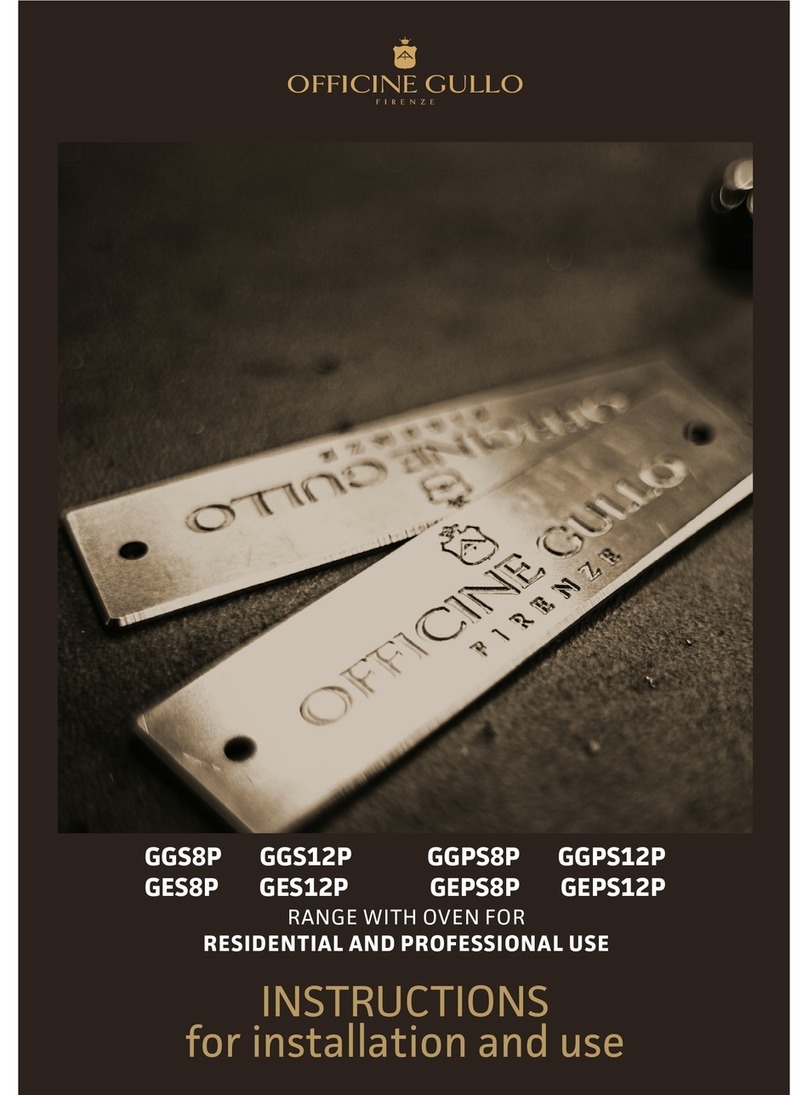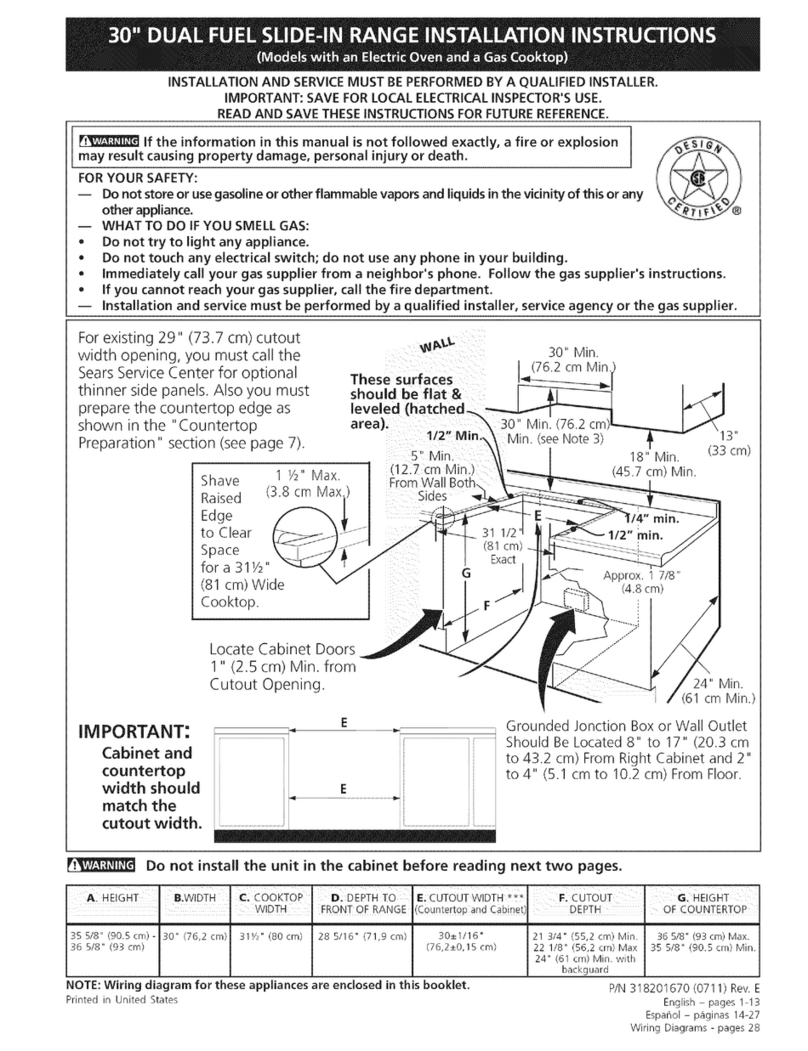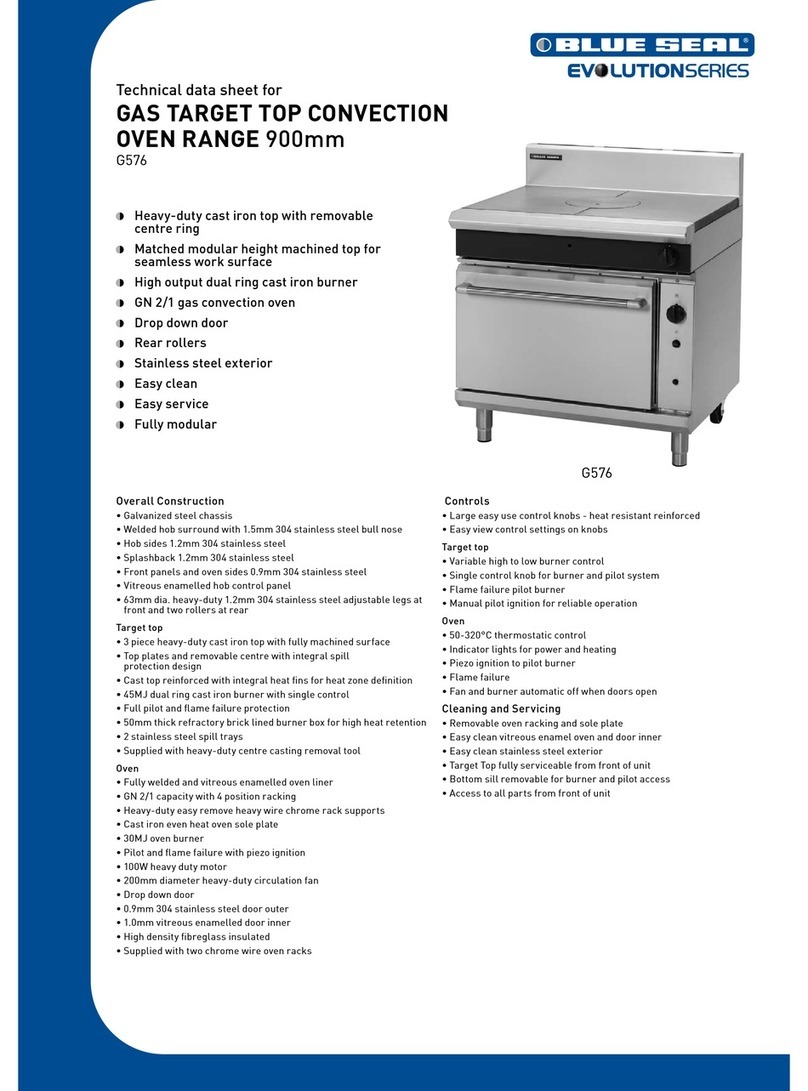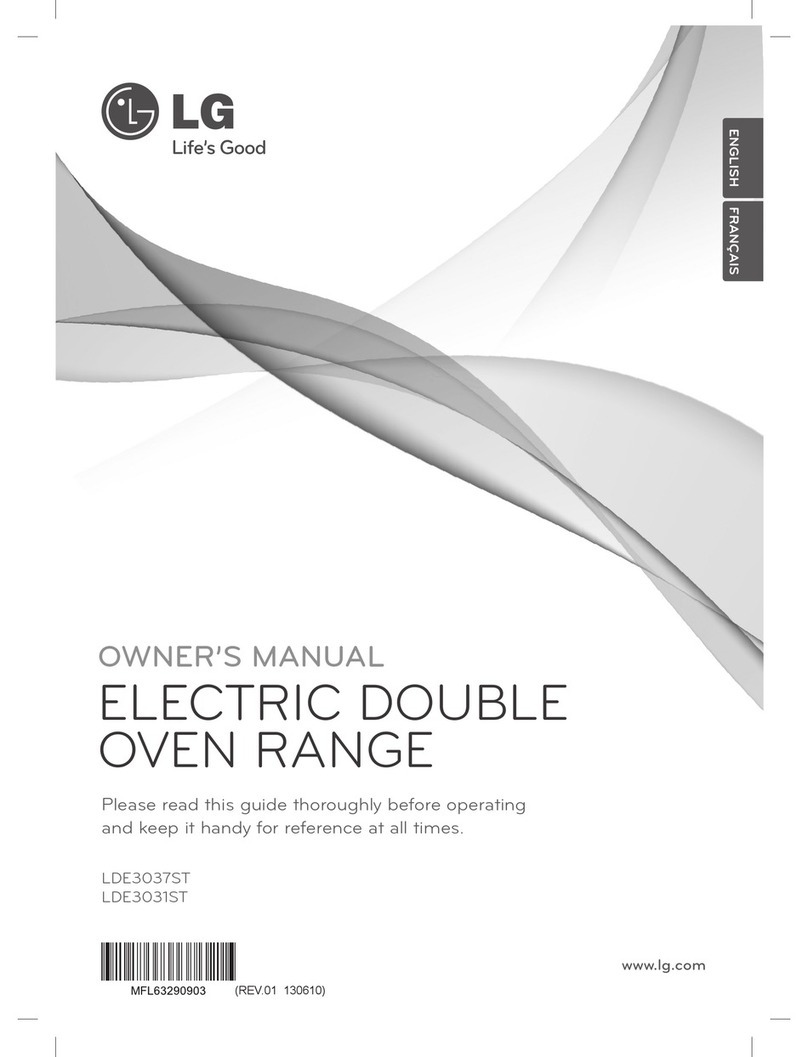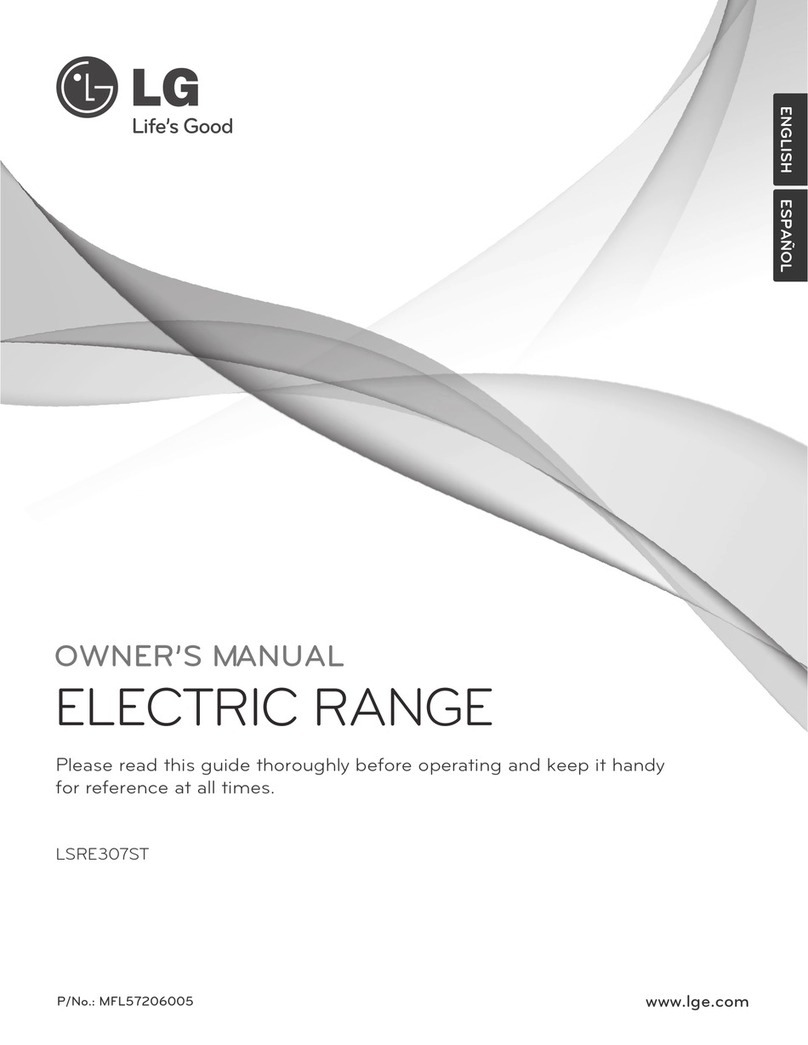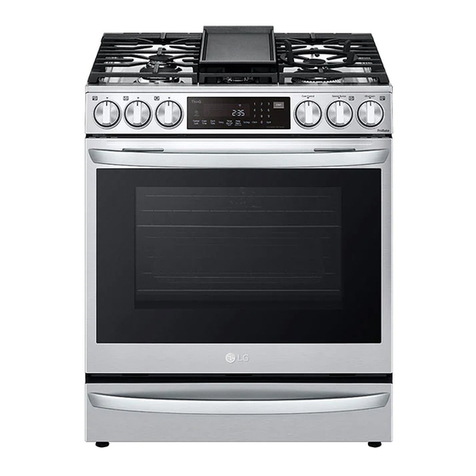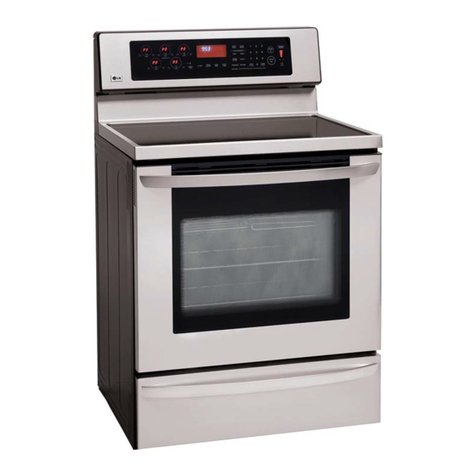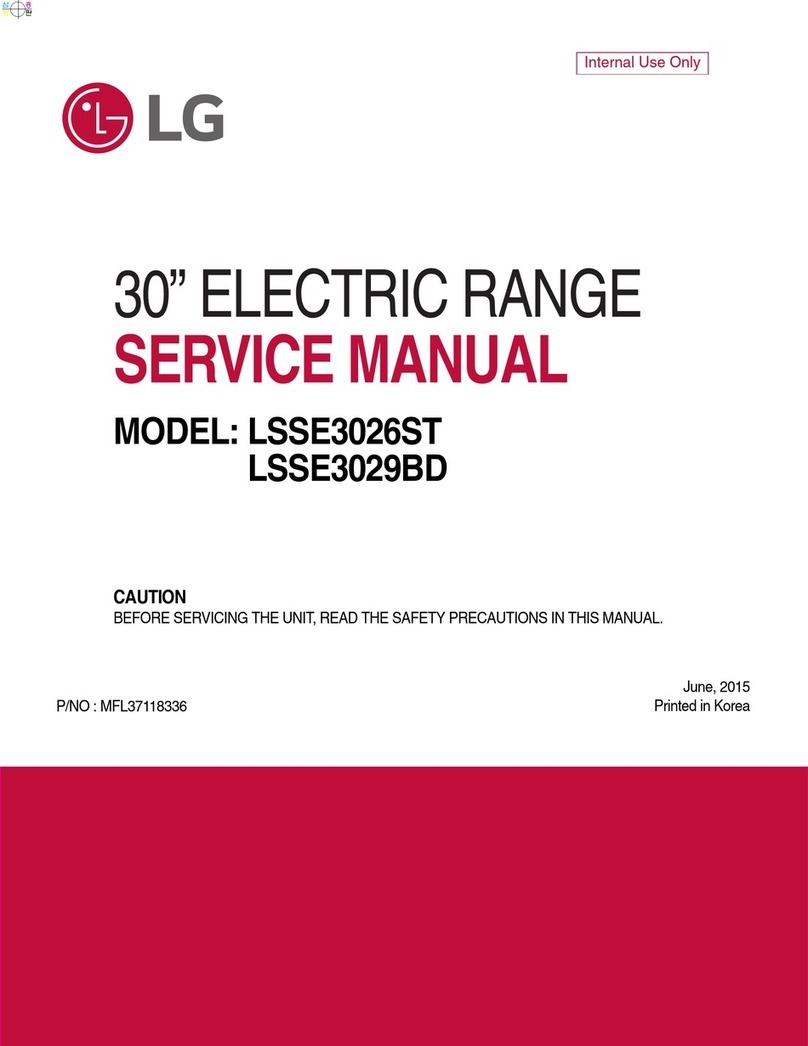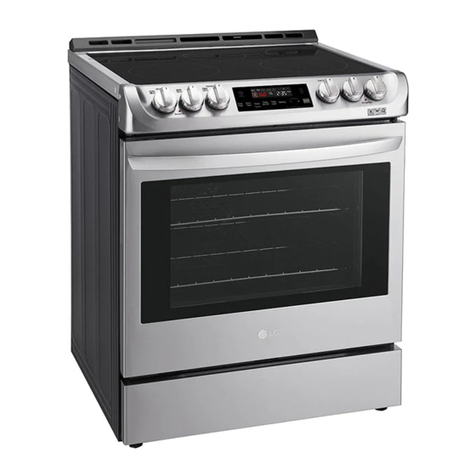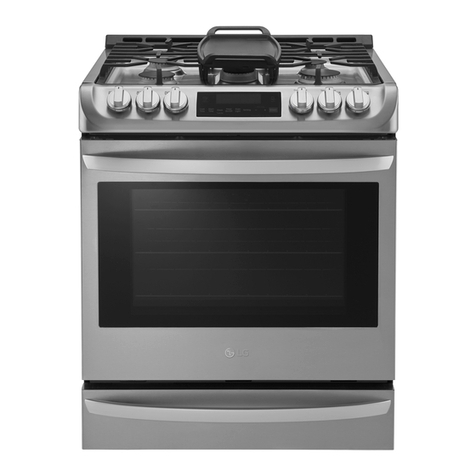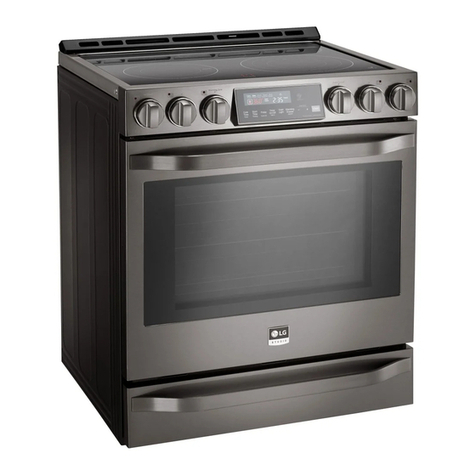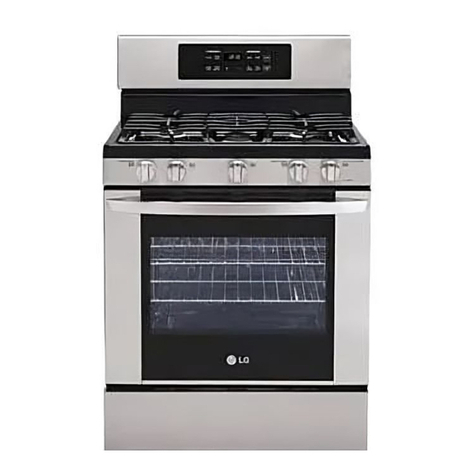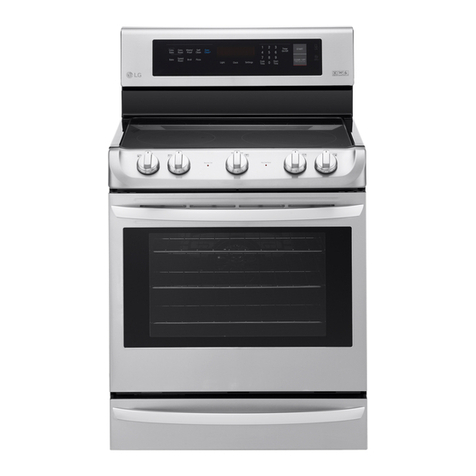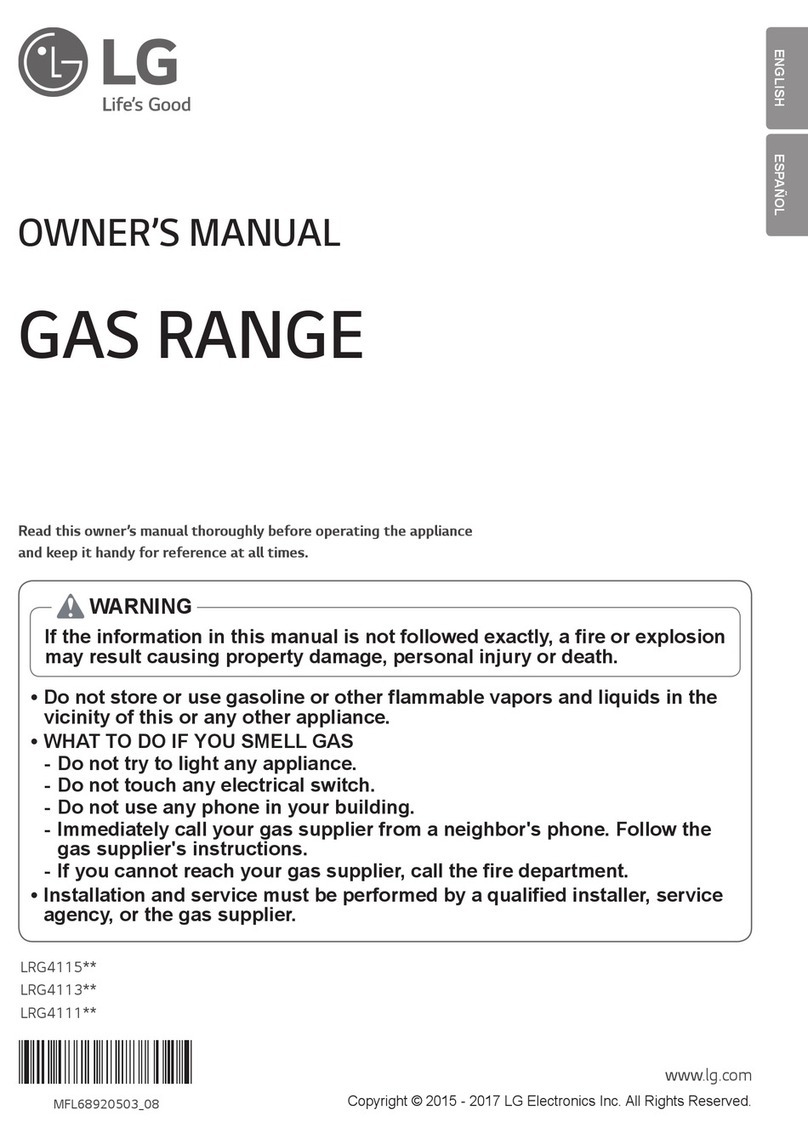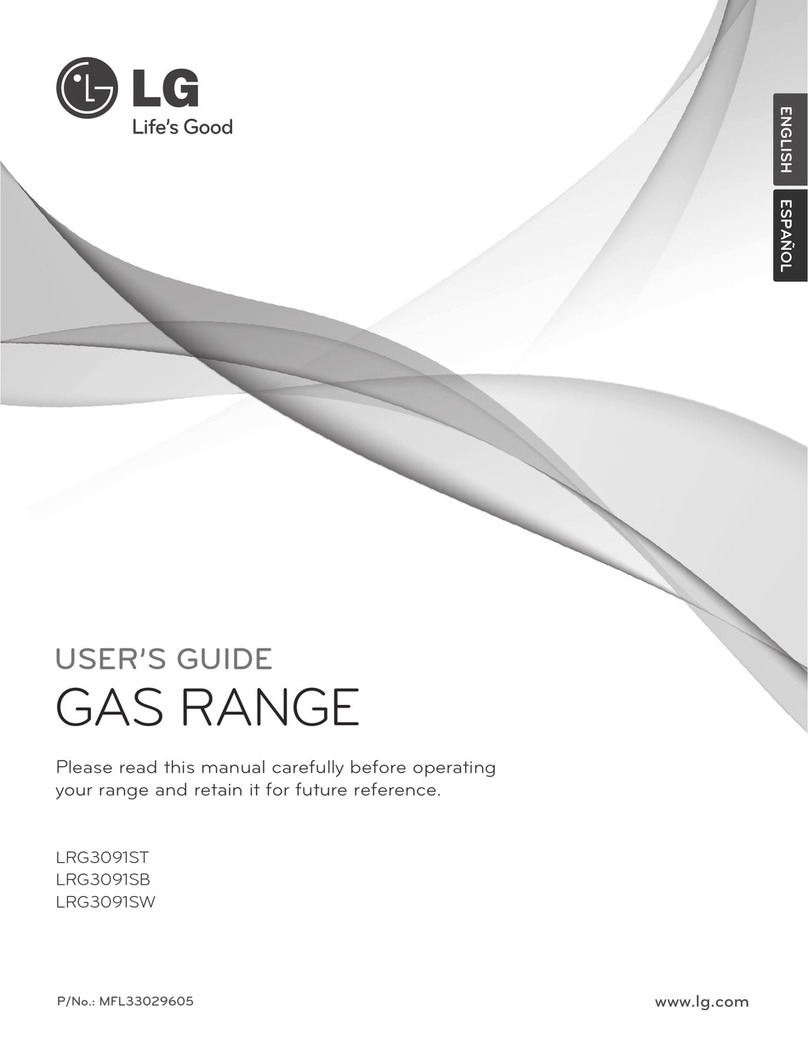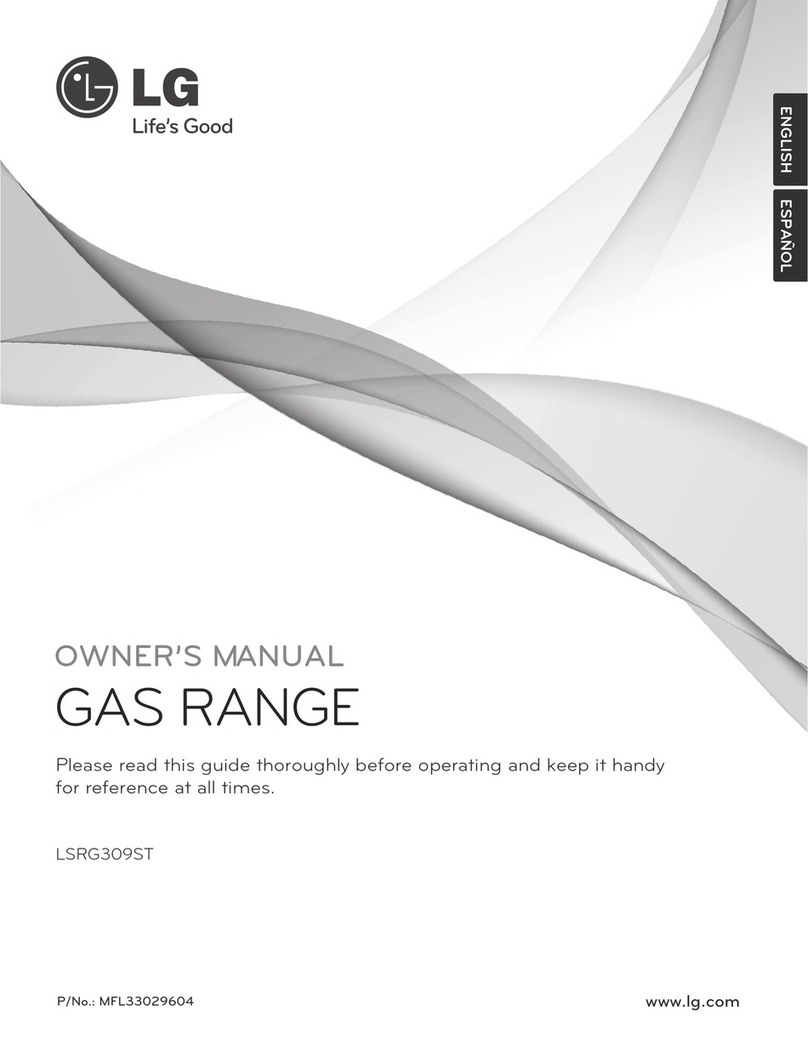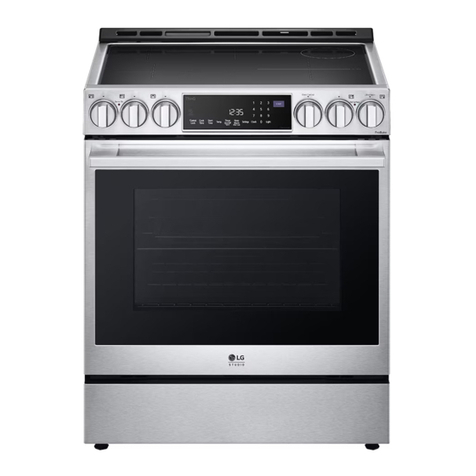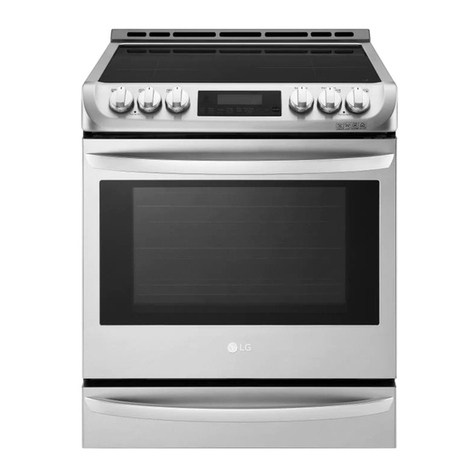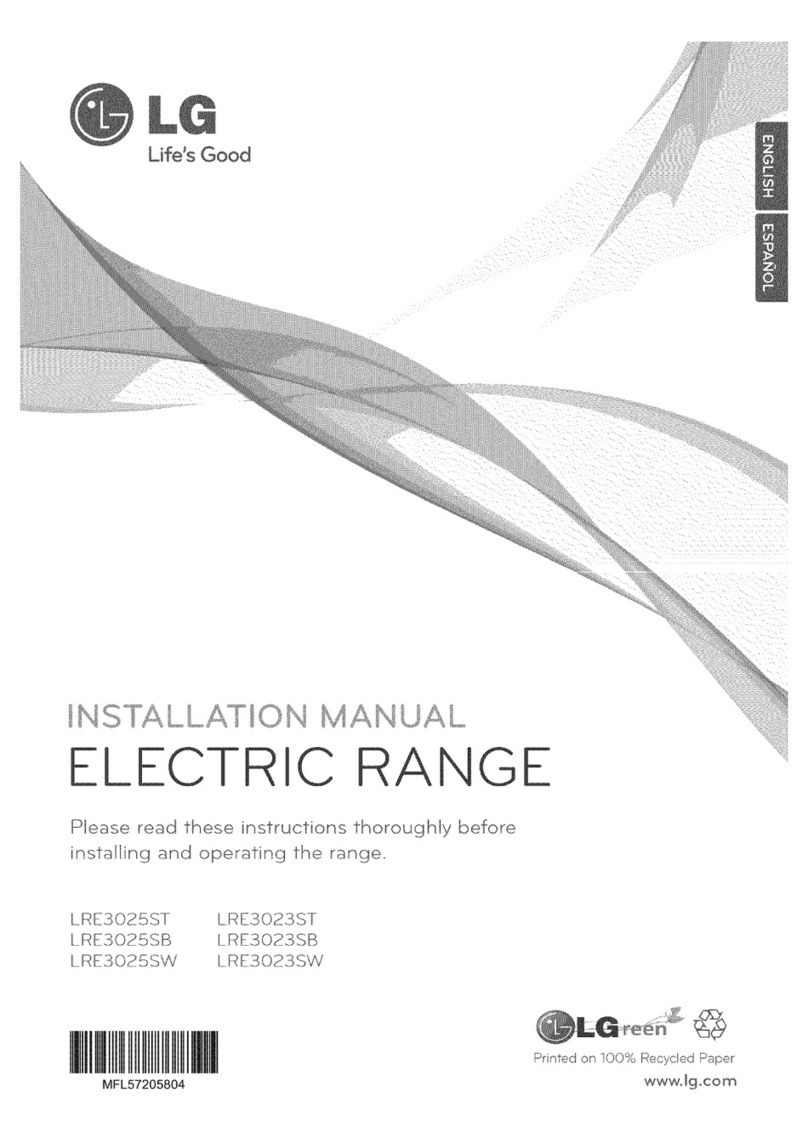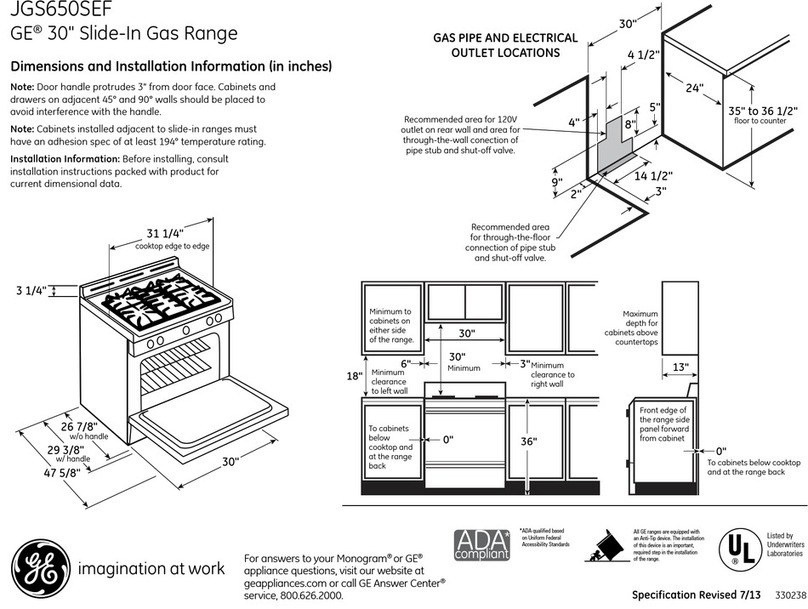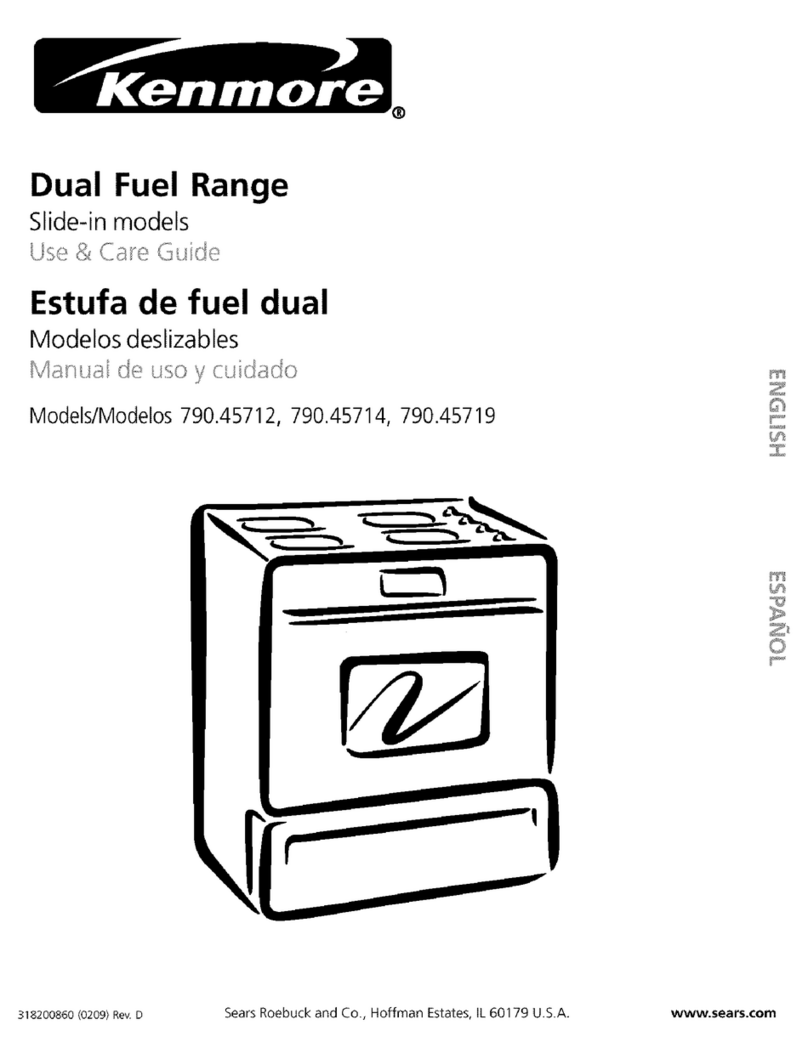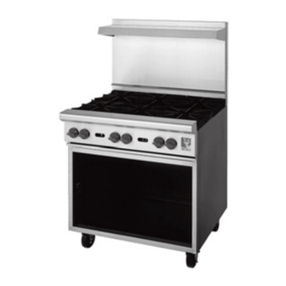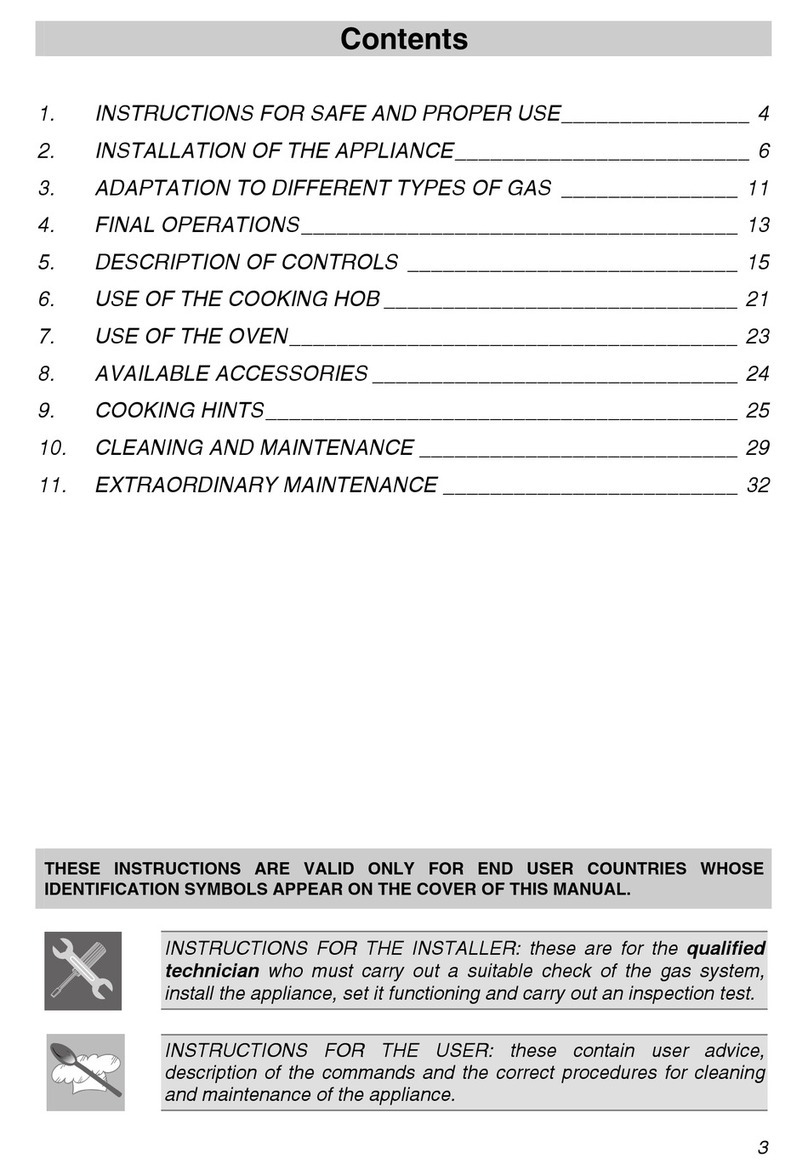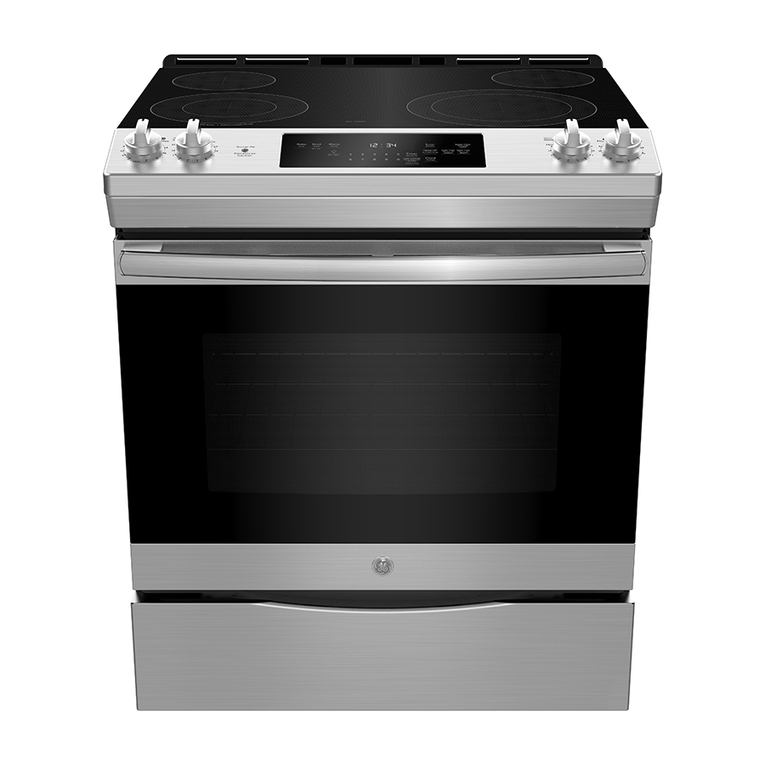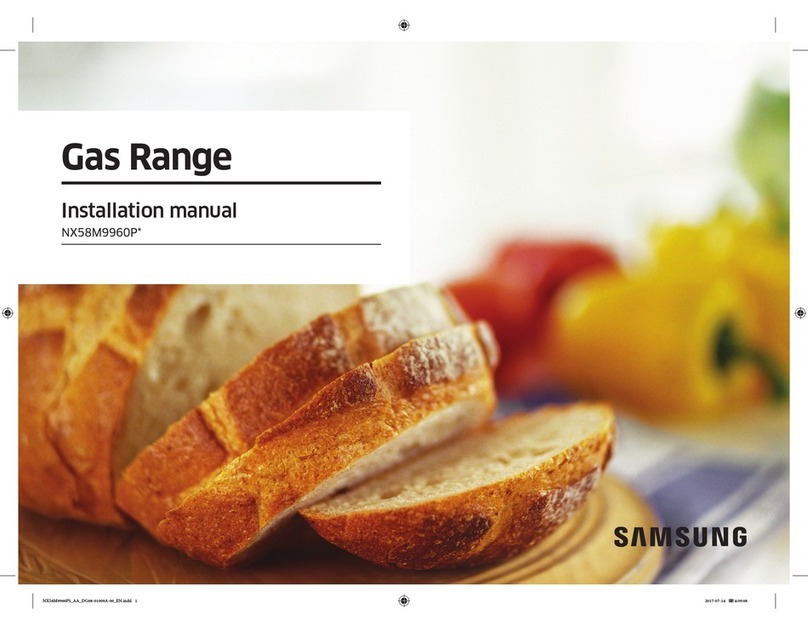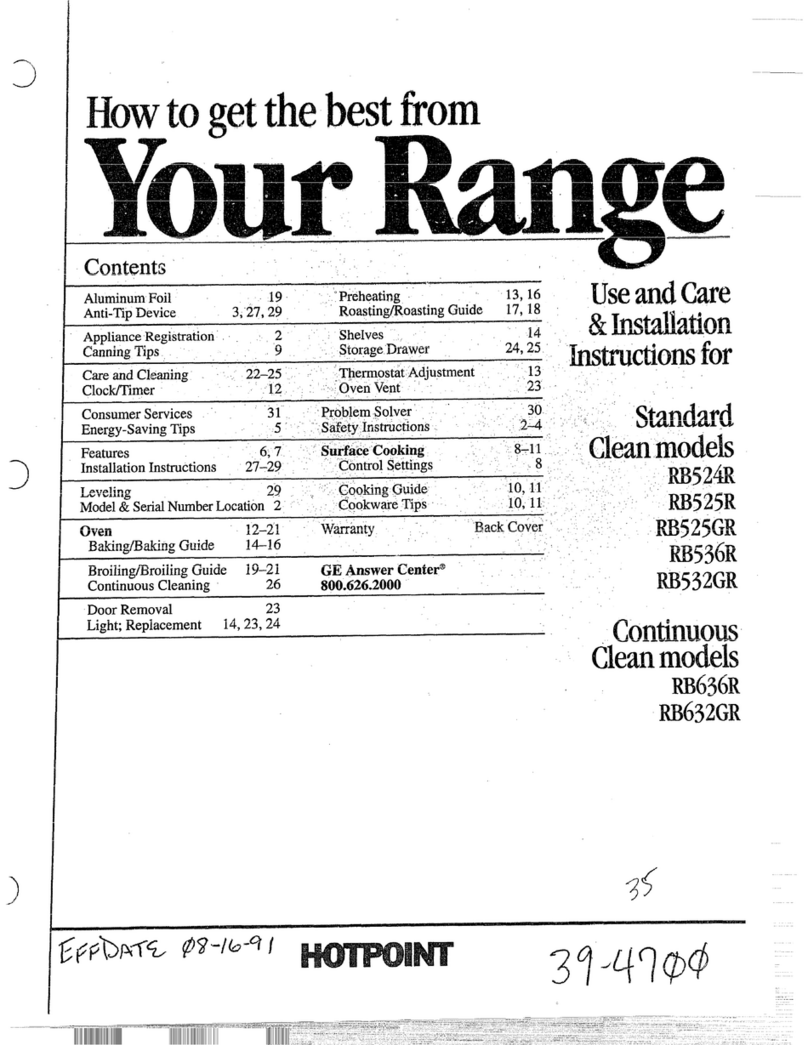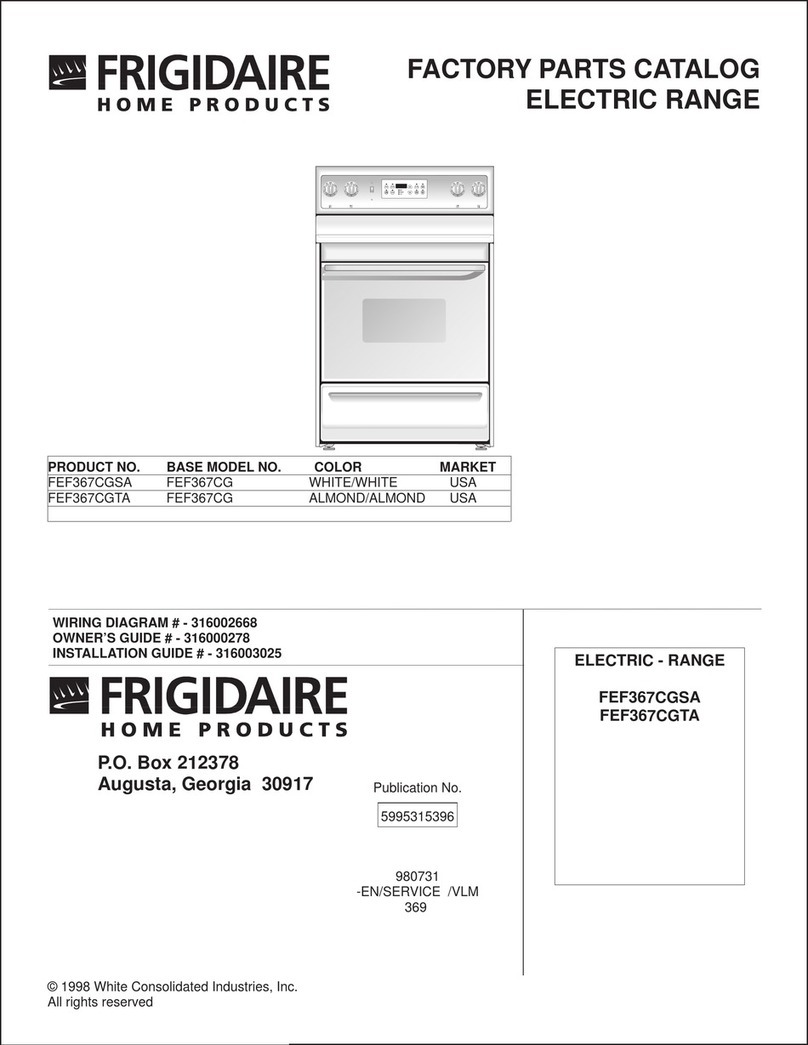
8
SAFETY DURING USE
tDo not touch the oven racks while they are hot.
tIf a rack must be moved while the oven is hot, do not let the pot holder contact the hot
heating element in the oven.
tUse caution with the Timed Cook or Delayed Timed Cook features. Use the automatic
timer when cooking cured or frozen meats and most fruits and vegetables. Foods that can
easily spoil, such as milk, eggs, fish, meat or poultry, should be chilled in the refrigerator
first. Even when chilled, they should not stand in the oven for more than 1 hour before
cooking begins, and should be removed promptly when cooking is complete. Eating
spoiled food can result in sickness from food poisoning.
tAccessible parts may become hot when the grill is in use.
tDo not place food or cookware on the bottom of the oven cavity. Doing so will cause
permanent damage to the oven bottom finish.
tDo not use water on grease fires. Should an oven fire occur, leave the oven door closed
and turn the oven off. If the fire continues, throw baking soda on the fire or use a fire
extinguisher. Do not put water or flour on the fire. Flour may be explosive and water can
spread a grease fire and cause personal injury.
tPull the oven rack to the stop-lock position when loading and unloading food from the
oven. This helps prevent burns caused by touching hot surfaces of the door and oven
walls.
tDo not use the oven if a heating element develops a glowing spot during use or shows
other signs of damage. A glowing spot indicates the heating element may fail and present
a potential burn, fire, or shock hazard. Turn the oven off immediately and have the heating
element replaced by a qualified service technician.
tWhen using cooking or roasting bags in the oven, follow the manufacturer’s directions.
SAFETY WHEN CLEANING (Model LREL6325* / LREL6323*)
tOpen a window or turn on a ventilation fan or hood before self-cleaning.
tIf the oven is heavily soiled with oil, self-clean the oven before using the oven again. The
oil could cause a fire.
tWipe up heavy soil on the bottom of the oven before using the Self Clean function.
tDo not use oven cleaners. Commercial oven cleaner or oven liner protective coating of
any kind should not be used in or around any part of the oven.
tNever keep pet birds in the kitchen. The health of birds is extremely sensitive to the fumes
released during an oven self-clean cycle. Fumes may be harmful or fatal to birds. Move
birds to a well-ventilated room.
tClean in the self-clean cycle only parts listed in this manual. Before self-cleaning the oven,
remove the broiler pan, all oven racks, the meat probe and any utensils or food from the
oven.
tImportant Instruction. The oven displays an F error code and sounds three long beeps
during the self-cleaning process if it malfunctions in the self-clean mode. Switch off the
electrical power to the main fuse or breaker and have the oven serviced by a qualified
technician.
tIt is normal for the cooktop of the range to become hot during a self-clean cycle.
Therefore, touching the cooktop during a self-clean cycle should be avoided.
tNever pour cold water over a hot oven for cleaning. Doing so may cause the oven to
malfunction.
tMake sure oven lights are cool before cleaning.
